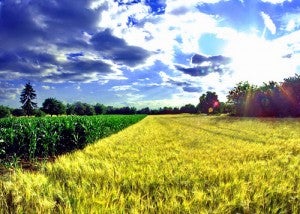Whether I’m out shopping, preparing a meal for my husband and 10 year-old twins, or visiting a farm with one of our agricultural partners, I’m continually reminded of why I’m so passionate about agriculture. The food supply chain touches all parts of our lives, and my job gives me the opportunity to make sure the farm to plate journey is as sustainable as possible.
Growing up in Connecticut, I spent a lot of time exploring the outdoors and I’ve always had a deep love for animals. Although most of my time in nature is now spent protecting it, I still find the time to run outside every morning before I wake up my kids. Along with all of the farmers and partners I work with, my children – and their cousins (also twins, born on the same exact day as mine) – are the ones keeping me dedicated to building a sustainable future.
Here’s why I couldn’t imagine working anywhere else. Read More



















